The Cost of Travel in Cambodia: A Detailed Budget Breakdown
Cambodia is such a wonderful country.
While it may be most famous for the magnificent Angkor Wat, it has so much more to offer its visitors. You’ve got beautiful beaches, spectacular islands, delicious food, hipster cities, so much history, and plenty of welcoming locals. Yes, I absolutely adore Cambodia.
I’m fortunate to have spent three months in the country; splitting my time between four visits and multiple different travel styles. I backpacked on an absolute shoestring, visited as part of a couple on a mid-range budget, and splurged on some luxury for an unforgettable birthday treat for my partner. I even flew to Cambodia when it opened up to tourists post-pandemic and explored the country while few other tourists were there.
Most importantly of all, I tracked every single Riel I spent while I was there.
If you’re wondering how much it costs to travel in Cambodia, this is the post for you!
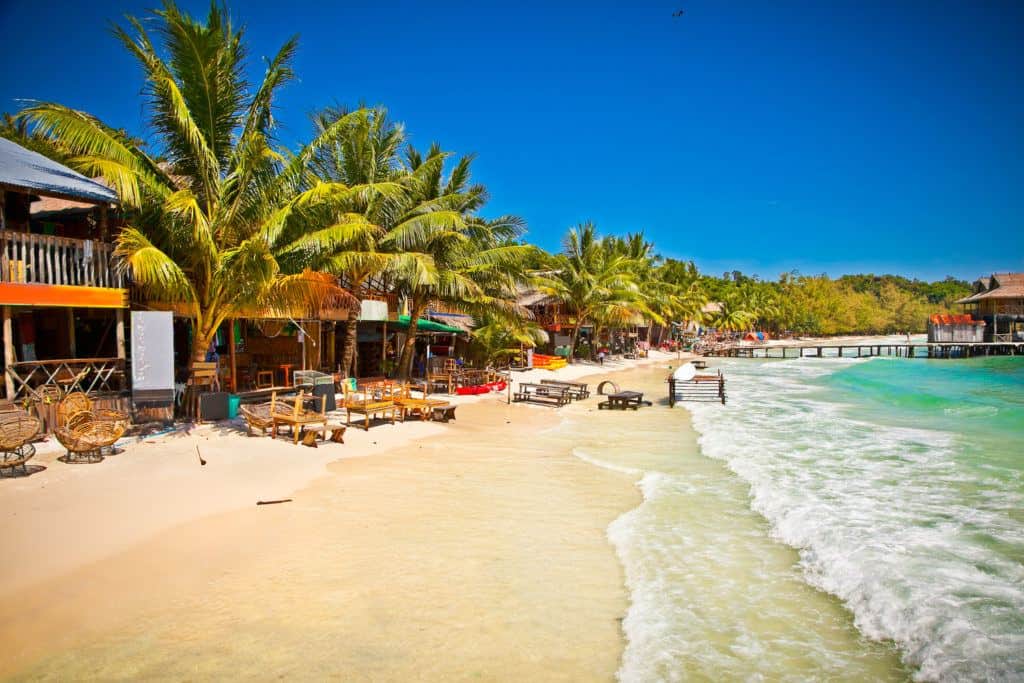
What to Know About Money in Cambodia
Cambodia’s currency is called the Riel (KHR) and one U.S. dollar is typically worth 4,000 riels. If you’re thinking that’s going to make calculations difficult, fear not: you’ll only really use riels when paying for small-ticket items.
Yes, most people use U.S. dollars in Cambodia, so don’t be surprised to see many prices quoted in USD, although both currencies are accepted everywhere. In convenience stores and markets, you’ll most likely be quoted in riel. The ATMs dispense U.S. dollars.
You can’t take any riels outside of Cambodia, so make sure you exchange any before leaving the country or you’ll be stuck with them. This also means you won’t be able to exchange your money into riels before you arrive in the country. But no worries — U.S. dollars will be more useful in Cambodia.
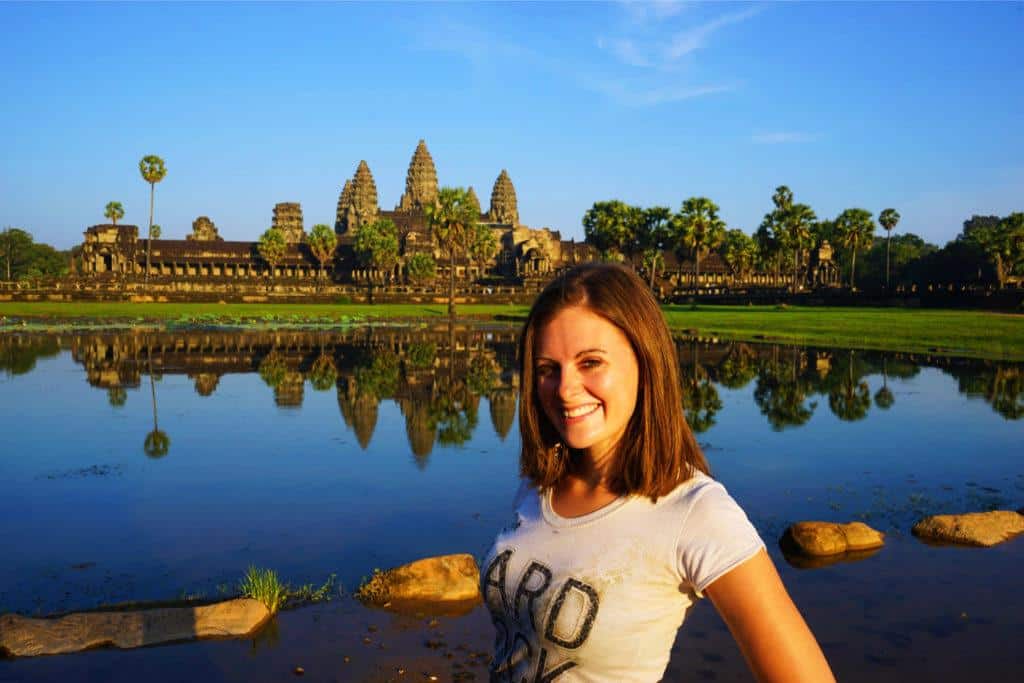
How to Find Cheap Flights to Cambodia
If you’ll be entering Cambodia from anywhere outside of Southeast and East Asia, you’ll be doing so via an indirect route. Yes, direct flights to Cambodia simply don’t exist from Europe, the Americas, Africa, and Oceania.
To find cheap flights from any of these regions, then, my first recommendation is Secret Flying and my second is Skyscanner.
Secret Flying is my number one flying trick and it’s rare for me to ever travel anywhere on a flight that wasn’t found through that website. It’s a flight deals site that shares some of the absolute best prices for airfare that’s recently gone on sale. It’s thanks to Secret Flying that I flew from Lisbon to Cape Town for €280 return, Rome to Japan for €350 return, London to Los Angeles for $120, and Singapore to London for $120. In short, regularly checking flights from your home country to Southeast Asia will help you save a lot of money.
Keep in mind that it’s always far cheaper to fly into Phnom Penh than it is to Siem Reap, as everybody wants to set eyes on the temples of Angkor. When planning your trip, plan your itinerary to kick off in the capital, and it’ll help you save money on flights. I paid $100 to fly from Singapore to Phnom Penh via Siem Reap, and was shocked to see it would cost $200 to fly on the exact same flight, finishing in Siem Reap.
First, check Secret Flying deals to Southeast Asia as a whole from the U.S., Canada, Australia, or wherever else you’re from. You’ll likely be able to pick up a flight to somewhere within the continent — most likely Bangkok, Ho Chi Minh City, Kuala Lumpur, or Singapore — for as little as €350 return. From there, you can use Skyscanner to find flights to Cambodia.
Of course, if Secret Flying doesn’t have any great deals showing or you want to get to Cambodia with the least amount of hassle, you can use Skyscanner from the get-go. After 10 years of continuous travel, it’s my favourite way to search for flights, as I love that you can search for flights from an entire country to Cambodia and that you can search for travel dates across an entire month to ensure you’re flying on the cheapest days.
As always, the more flexible your plans, the easier you’ll find it to save money on flights. If you’re happy to fly into and out of different airports, you may be able to pick up a deal (flying into Phnom Penh and out of Siem Reap, for example), and if you’re happy to visit at any time of year, you’ll be able to pick and choose the best prices, too.
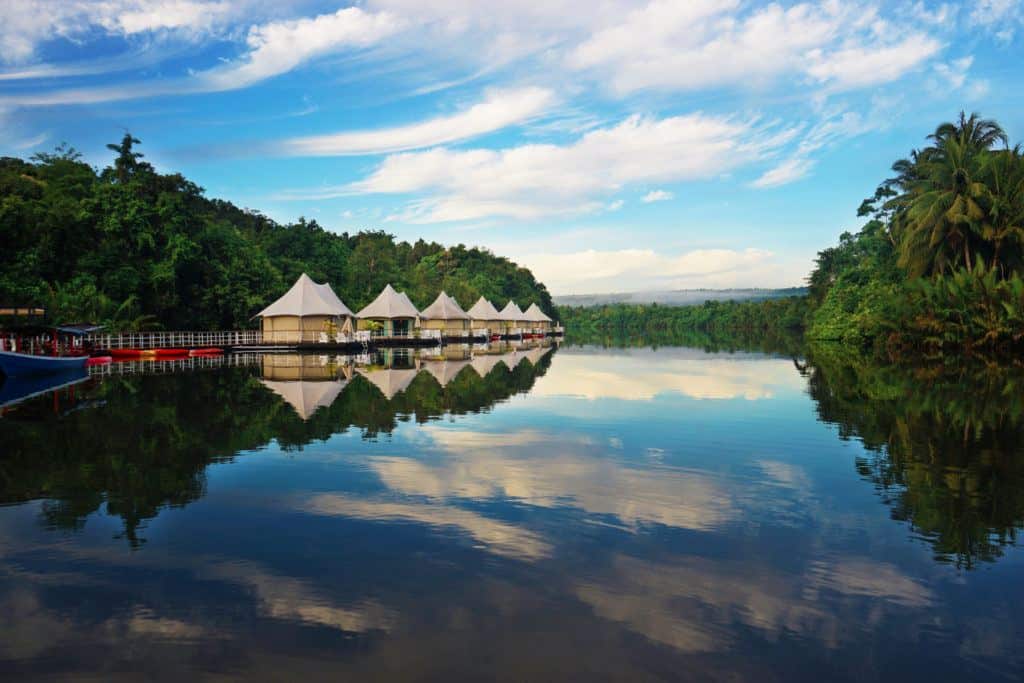
The Cost of Accommodation in Cambodia
When it comes to saving money on accommodation, let’s start with the options for budget travellers.
The first of these is hostels. Cambodia has hostels blanketed across the country, and they’re one of your best options for saving money while still making friends. I always recommend staying in hostels if you’re going to be travelling solo!
And fun fact: I found the cheapest hostel from my travels in Cambodia! In Siem Reap, some friends of mine stayed in a 10-bed dorm for $0.50 a night! Yeah, it was pretty grim, but if you’re running out of money and desperate to extend your travels, it’s could be worth it for you.
Hostels in Cambodia are similarly priced to elsewhere in Southeast Asia, so you can get by on not very much at all. You can expect to spend around $5-10 a night for a dorm bed, and $15 for a private room, so if you’re travelling as part of a couple, you may find you end up spending similar amounts for a private room, as opposed to going with two beds in a dorm.
If you’re on a really tight budget, you can stretch your Riels out by making use of some of the free accommodation options in the country. Couchsurfing has been a backpacking staple for over a decade now, and there are thousands of hosts scattered across Cambodia. If a host agrees to let you stay with them, you’ll be able to gain an insight into life in Cambodia that’s always going to be tough to experience when staying with other travellers in hostels.
Housesitting is another option if you’re going to be trying to save as much money as possible but want to stay in nicer accommodation. The best option for Cambodia is Trusted Housesitters, and there are usually a handful of options up for grabs in the country. Housesitting allows you to stay in somebody’s house for free, usually while taking care of their pets, and is a fantastic way to spend more time in Cambodia without breaking the bank.
Finally, when it comes to free accommodation, you could also check out WWOOFing. You’ll receive free lodging and food in exchange for working on a local organic farm for a few hours every day. You’ll likely make tons of new friends, learn a new skill, and see a side of Cambodia that few travellers get to experience. WorkAway is another option in Cambodia that’ll give you a free stay in exchange for a more diverse choice of work (think: volunteering in yoga studios, painting houses, and working in an eco resort on a paradise island).
In Cambodia, I don’t really recommend bothering with Airbnb. Prices are typically high and most of the time, it’s only guesthouses that are listing on there anyway — and at higher prices than they do on Booking.
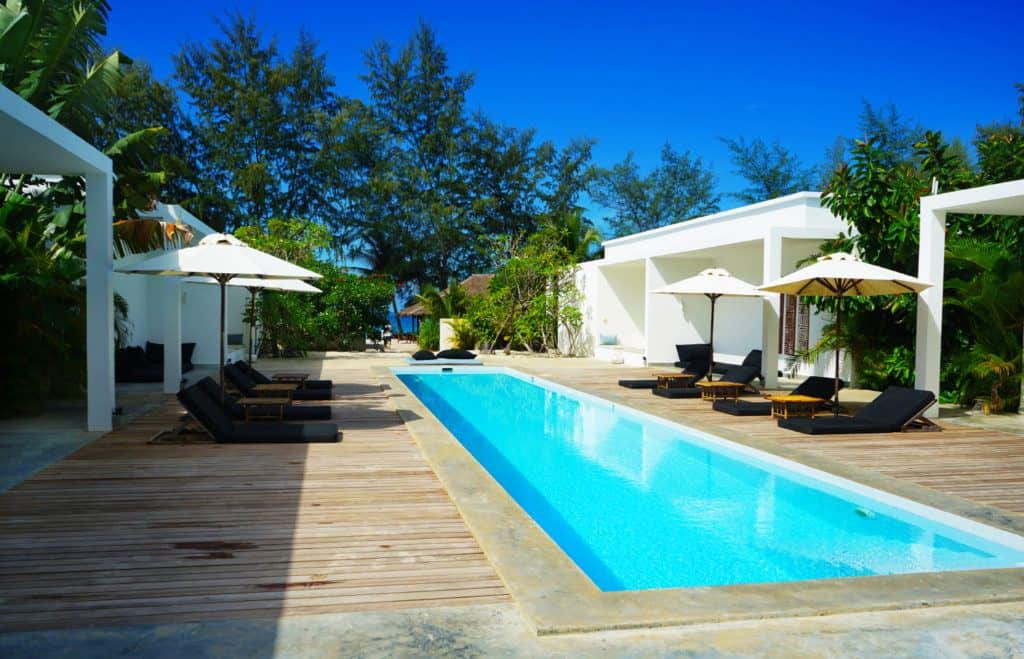
Okay, but what if you’re not a budget traveller and just want to stay in a lovely, well-reviewed hotel or guesthouse that’s good value for money and has all the things you need from a place to lay your head? I’ve got you! I’ve visited Cambodia on a cheap-as-chips, mid-range, and high-end budget, and was blown away by how much I could get for my money. For around $60 a night, you’ll be able to stay in a seriously impressive hotel.
Here are some of my favourite spots in the country.
Phnom Penh: Aquarius Hotel ($41 a night)
My new favourite Phnom Penh hotel! When I touched back down in Cambodia in early-2022, I knew I wanted to celebrate my first pandemic-era trip in style. Aquarius Hotel is simply wonderful, and as one of the top-rated hotels in the city, an easy choice for me to make. It has the most incredible rooftop swimming pool, with sun loungers slotted around the water, and a spacious, airy bar with happy hour cocktails (buy 2, get 1 free) that we took advantage of every evening. The staff are wonderful, the rooms are clean and modern, and it’s in a fantastic location, within walking distance of all the main attractions. But really: it’s all about that rooftop infinity pool!
Kampot: RikiTikiTavi ($65 a night)
I’ve stayed at RikiTikiTavi three times[!], so opting for this guesthouse now feels like a travel tradition for me. Fortunately, it’s just as lovely in 2022 as it was in 2012. It’s an adorable guesthouse in a central location, right on the banks of the river. The open-air restaurant makes for a particularly epic spot for catching the sunset each evening. The staff are wonderful, the rooms luxurious, and it’s easy to hire motorbikes through reception to ride to Kep and back.
Kep: Q Bungalows ($20 a night)
I absolutely adored Q Bungalows; so much so that I extended my stay by a couple of nights because I wanted to soak up more of the property’s chill vibes. If I’d had an infinite amount of time in Kep, I think I’d have stayed for a couple of weeks. Here, it’s all about the wonderful owners! When I was unwell, one of the owners brough me a cup of ginger lemon tea, which was so sweet! The bungalows themselves are clean and spacious, with large balconies, and the swimming pool is wonderful! Yep, that’s $20 a night and you get access to a pool. I can’t recommend this place highly enough.
Siem Reap: Primefold Hotel ($40 a night)
Talk about an incredible hotel! Primefold Hotel is one of the best hotels I’ve ever stayed in, and I’ve racked up 450 hotel stays over my years of travel! The staff are simply incredible, greeting you with free gifts, writing sweet goodnight messages for you each night, and doing everything to help you get the most out of your stay in Siem Reap. The pool is gorgeous, the rooms are luxurious as hell, and it’s in a wonderful central location. I first stayed here in 2015 and returned in 2022 — it’s just as lovely now!
Koh Kong: Canvas and Orchids ($250 a night)
Yep, this was definitely a hotel I visited on my high-end trip to Cambodia! But what a mind-blowing spot and something you can find nowhere else in the world. This floating hotel is located atop the Tatai River, in the southwest corner of the country, a few miles from the Thai border and surrounded by jungle. Nobody visits this part of Cambodia! You need to take a half hour boat journey to get there, and when you arrive? Nothing but silence.
At Canvas and Orchids, you’ll find no roads and no neighbours. It’s only accessible by boat and you’ll spend your time floating on the water in a permanent state of bliss.
You have free use of the kayaks to explore Koh Andet, formerly a refuge from the Khmer Rouge and now home to a dozen farming families. Most of the hotel’s staff come from there. You also have access to inflatable rings to float in down the river — a cold Angkor beer in hand — and we even received a free evening cruise to go firefly spotting in the jungle.
It was one of my greatest travel experiences ever.
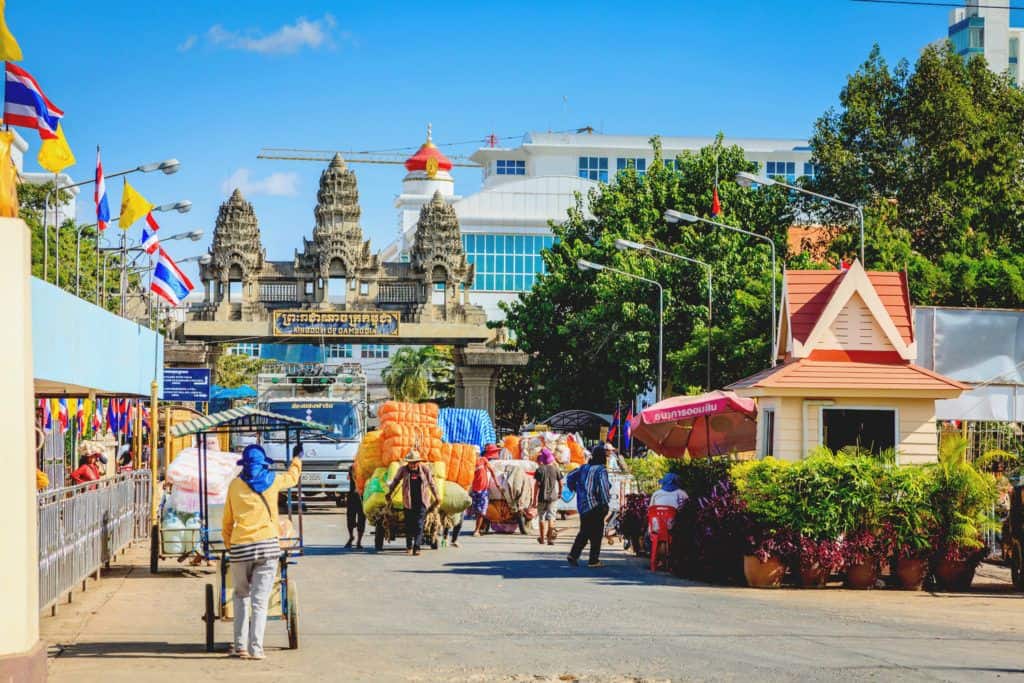
The Cost of Transportation in Cambodia
Cambodia’s a small country and it’s home to a solid public transportation system.
Most people get around the country by bus or minivan, as it’s affordable and easy to book online with 12Go Asia. We booked all of our travels in Cambodia through them, as none of the local booking sites would accept our foreign cards.
The buses and minivans in the country are generally high-quality, although the roads can be poor, so expect a bumpy journey at times. Giant Ibis is the biggest and best bus company in Cambodia, covering most destinations in the country. Their buses come equipped with A/C, Wi-Fi, power sockets, and snacks. You can expect to spend around $10 for each bus ride. Otherwise, you’ll be jumping in minivans, which are all clean, comfortable, and have air conditioning.
One of the best aspects of travel in Cambodia is hitting the water and heading out to the islands. Koh Rong is the most popular destination, but Rabbit Island is a great option if you’re on a budget and like to head off the beaten track. The ferries average around $12 each way.
If you’re travelling in a group, you may find it more affordable to hire a private taxi through 12Go Asia and split the cost between you. If a bus is $15 each, for example, and a taxi is $100 and there’s four of you, it’s probably worth each paying the extra $10 to have a more comfortable journey.
For shorter distances, taxis and tuk-tuks are prevalent, and PassApp (the Uber of Cambodia) is available everywhere. Seriously: the one thing you should do when you arrive in Cambodia is download PassApp! It makes getting around so easy. Not having to bargain with tuk-tuk drivers and try to explain where you need to go and getting scammed and overcharged and… none of that’s a problem when you use PassApp!
I wouldn’t recommend hiring a car in Cambodia. The roads are bad, it’s tricky to get your hands on a Cambodian driving license, and simply isn’t worth the effort and hassle it’ll take to get it all set up.
I also want to mention flying in Cambodia. If you’re short on time, you may want to jump on a plane to skip the bad roads. On one of my trips, I flew between Siem Reap and Phnom Penh and from Kampot to Siem Reap and paid around $50 for each of the flights with Angkor Air.
Here are some typical overland transportation costs you’ll come up against while you’re travelling in Cambodia. All prices are correct as of February 2022:
- Bus ride from Phnom Penh to Siem Reap: $10
- Bus ride from Sihanoukville to Phnom Penh: $9
- Minivan from Kampot to Kep: $4.50
- Motorbike hire in Kampot for 24 hours: $5
- Bus from Siem Reap to Battambang: $8
- Ferry from Sihanoukville to Koh Rong: $12
- Ferry from Kep to Rabbit Island and back: $7
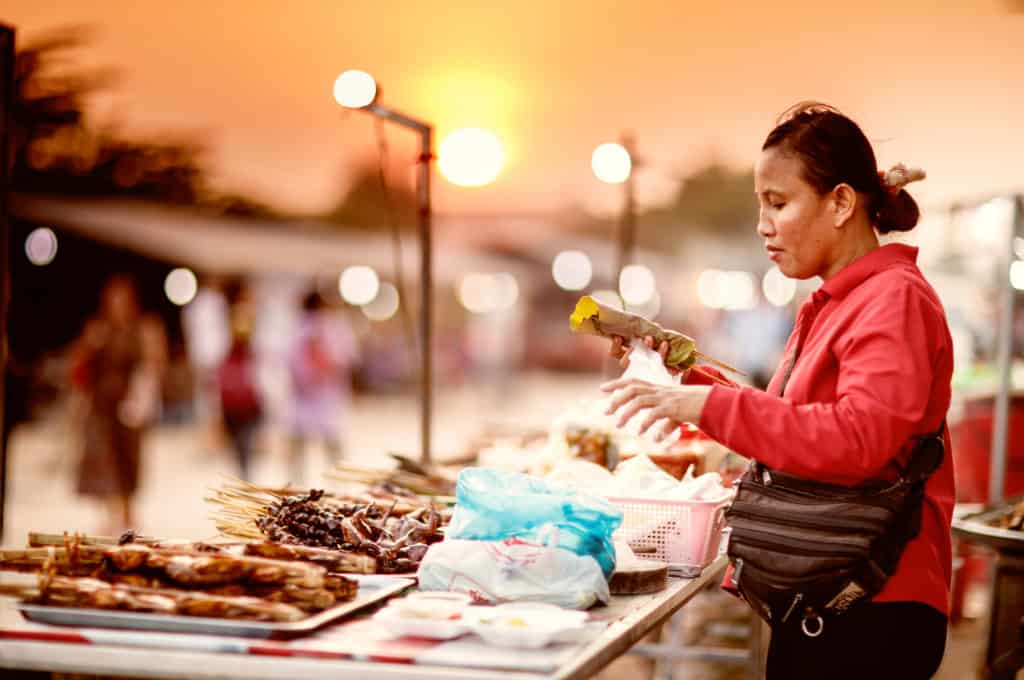
The Cost of Food in Cambodia
Cambodian food is often overlooked by travellers in Southeast Asia; mistakenly viewed as bland and boring in comparison to fiery Thai dishes and complex Vietnamese soups. Don’t buy into the rumours: there’s plenty of delicious dishes to sink your teeth into in Cambodia.
Food in Cambodia is tasty and inexpensive, and you’ll never find yourself complaining about the cost of a meal. If you’re on a tight budget, dishes can be had for as little as $1, which makes saving money incredibly easy. And yet, even when travelling this country on a higher budget, I still only averaged $5 a day or so on food. When the local food is so delicious, there’s no reason to pay more — and actually, it’s hard to find places with higher prices!
I loved diving into the food scene across Cambodia, and in particular, I enjoyed exploring the hipster cafe scene in Phnom Penh. I’d love to give a shout out to Backyard Cafe in Phnom Penh, for offering up some of the best avocado toast ($7.50) I’ve ever had — and I’ve spent the past nine months in Melbourne; home of the smashed avo! Backyard Cafe is a great place to go if you’re craving healthy, whole foods, with plenty of vegan, keto, and Paleo options. I also loved Idli Dosa for dosas ($1 each), and David’s Restaurant for phenomenal dumplings ($2 for 6).
When it comes to local eats in Phnom Penh, my greatest recommendation is Sophath, where I had one of my best meals in the country. Serving up nom banh chok — otherwise known as Khmer noodles — you’ll be able to pick up a steaming bowl for just $1.25. English isn’t spoken here, so you’ll simply pick one of the three steaming vats and prepare yourself for one of the tastiest dishes of your life.
If you’re looking to splurge on a date night and sample some of the best food in the country, consider heading to Malis in Phnom Penh or Siem Reap. Serving up experimental takes on Khmer food, it makes for an expensive meal, but it’s well-worth a visit if you love your high-end restaurants. We went for Valentine’s Day and it was the perfect way to celebrate! For $150 (I know), we each sampled the six-course tasting menu and shared a bottle of wine. (If you skip the fancy tasting menu, main courses are $10-20 each)
I recommend pairing a trip to Malis with a visit to Juniper Gin Bar in Phnom Penh — a fancy rooftop joint that overlooks the riverside. You’ll pay around $5 for a cocktail here; all of the ones we tried were fantastic.
If you want to impress your friends back home and sample something truly adventurous, add the town of Skuon to your Cambodian itinerary. This spider-filled town is packed full of tarantulas and everywhere you go, you’ll find them fried up, piled high, and ready to be eaten. Yes, really. The cost? 2,000 Riels, or 50 cents. In Battambang, you’ll be able to sample barbecued field rats — at a price of 25 cents each.
Cambodia’s tap water is absolutely not safe to drink — and I have the antibiotic-induced dysbiosis to prove it — so take care not to brush your teeth with the water and keep your mouth firmly shut in the shower. Nearly every guesthouse I’ve stayed at in Cambodia has provided free daily water bottles, but if not, they’re less than $1 for a 1.5-litre bottle from convenience stores. Pretty much every restaurant offers free water to patrons. I try to reduce my plastic consumption while travelling, so pack a Grayl water bottle with me. The Grayl removes all viruses, bacteria, and parasites from your water, and filters out particulates, chemicals, and heavy metals — so you can drink the tap water anywhere in the world!
In general, I’d recommend expecting to spend around $5 a day if you’re on a tight backpacker budget, $15 a day if you’ll be occasionally eating Western food restaurants, and $25 a day if you plan on eating at higher-end restaurants.
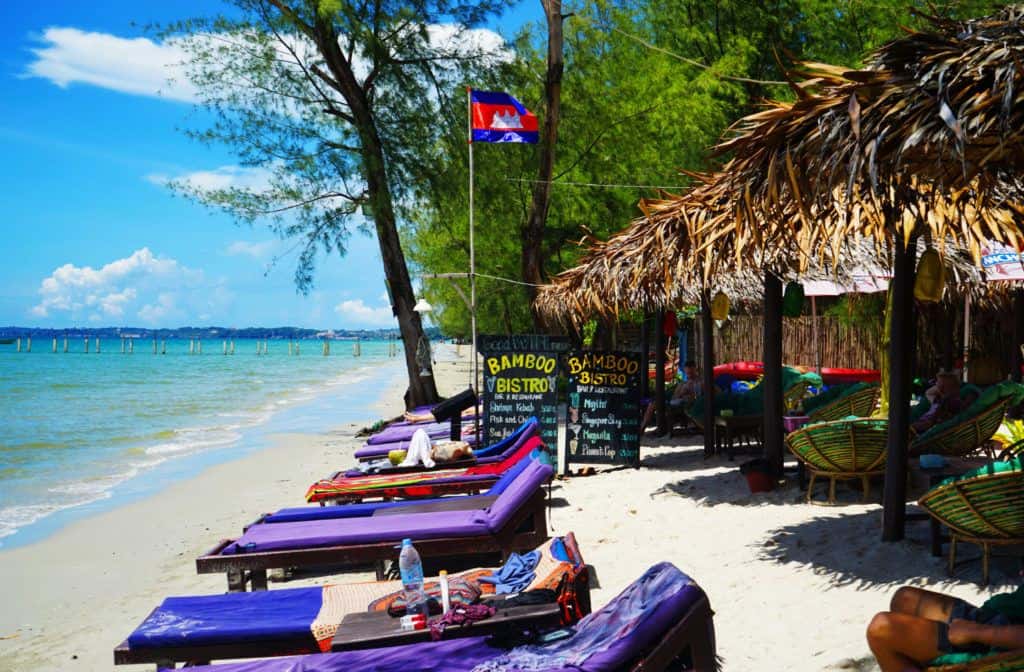
The Cost of Activities in Cambodia
When it comes to activities in Cambodia, you’re probably picturing one major attraction: Angkor Wat. Of course, it’s the one thing you have to do while you’re in the country. You can trust me on this: I’ve been on three separate visits! Yes, it’s going to be crowded and yes, it’s expensive, but it’s so, so worth it.
And if you hate crowds, it’s super-easy to get away from them. On my third visit to Cambodia, I knew I wanted to see the lesser-visited structures of Angkor and it was so easy to do. I hired a tuk-tuk driver for the day and asked him to take me to the quietest ruins where there would be no other tourists; to show me his favourite monuments.
I spent a fantastic day clambering over ruins, wandering through the jungle, and seeing just five or six people over the entire day. It was so worth the $37 for a one-day pass.
As of 2022, the cost of the three-day pass is $62 and the seven-day pass is $74.
But what else is there to do in Cambodia? There’s plenty to keep you busy in this country, even if you don’t have much money to spend.
One of my favourite free things to do is explore the Cambodian coastline. Skip Sihanoukville, as it’s a construction site these days with nothing to do or see. Koh Rong and Koh Rong Samloem are beautiful island-escapes, and there’s even Rabbit Island, off the cost of Kep, if you want to get away from the crowds. Kampot is full of the most delicious food and Kep is all about the crabs.
In Phnom Penh, there’s a few attractions that are worth checking out: The Royal Palace and Silver Pagoda are $10 to enter, as is the National Museum of Cambodia. You’ll definitely want to head out to Choeung Ek Genocidal Centre — the Killing Fields — where entrance is $6 per person and includes an audio guide. Tuol Sleng Genocide Museum is $5 to enter, with an additional $3 for an audio guide. You’ll pay just $1 for a visit to Wat Phnom; it’s absolutely worth the entrance fee.
In Siem Reap, when you’re not exploring Angkor, check out Phare, the Cambodian circus, which costs $10 per person. There’s tons of day trips you can set out on, too. You can spend a day exploring Beng Mealea and Koh Ker for $80, head out into the mountains to explore Phnom Bok for $48 per person, take a Cambodian cooking class in a local’s home for $29 per person, sign up for an evening street food tour for $69 per group, spend the day at Phnom Kulen waterfall for $59 per person, or head out to marvel at the floating village of Kompong Phluk on Tonlé Sap at a price of $45 per person.
In Battambang, the main attraction is the bamboo railway. Yes, it’s touristy, but also so much fun. I really enjoyed riding the rails out in the countryside. You’ll pay $5 per person for a return trip. If you’re confident on a scooter, I recommend hiring one for a day or two and using it to explore as much of the countryside of Battambang as possible — this is one of my favourite things to do in the country! Nothing is too expensive here: we paid $1 to enter Phnom Banan, $2 to see Phnom Sampov, and $1 to hit up Ek Phnom temple.
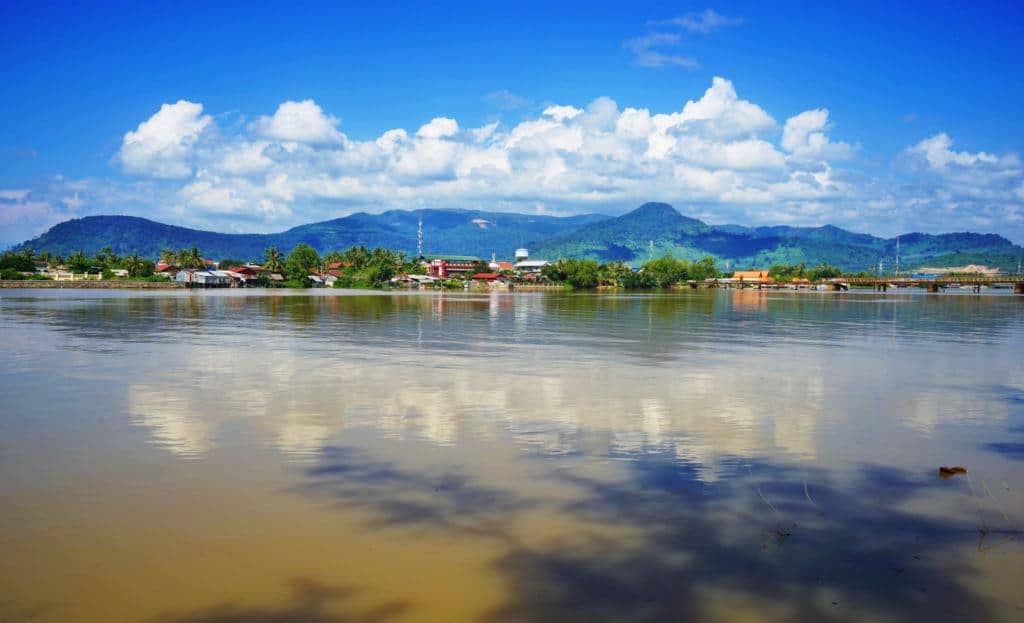
Miscellaneous Expenses for Cambodia
The Cambodian visa: $30 plus a $6 processing fee
Cambodia now offers an e-visa for tourists, which takes a lot of the hassle out of entering the country. You apply through the official government website and it takes three days to process and be approved. The website is super-easy to use and it only takes around five minutes to apply for the visa. Double-check that your entry port accepts e-visas (there’s a list on the site), but the airports and most of the overland borders do.
If you can’t apply online for the e-visa, you’ll need to apply for a visa on arrival at the land crossing. Officially, it’s $30 for a visa, but you can expect to pay an additional few dollars in bribes.
A Cambodian eSIM, plus 1GB of data: $4.50
On my most recent trip to Cambodia, I tried using an eSIM for the very first time and I fell in love with its convenience. I used the company Airalo, and it was all so easy to set-up. Essentially, before you fly to Cambodia, you head to the Airalo site, purchase a Cambodian eSIM and credit, and activate it. It took five minutes and meant that as soon as my flight touched down in Cambodia, I was able to turn on my phone and have data.
As somebody who truly hates the rigmarole involved in buying local SIM cards, this feels like such a game-changer. With the Airalo app on my phone, I was then able to top up with data whenever I needed to, and purchase any further eSIMs as I travelled across Southeast Asia.
A Cambodia guidebook: $18
A guidebook will give you an in-depth look into Cambodian culture, suggest the perfect itineraries for the amount of time you have, and offer recommendations for where to eat and what’s worth doing. I always opt for Lonely Planet guidebooks because I love how they look on my bookcase at home, and their Cambodia offering is great.
Travel insurance: $4 a day
I haven’t had the best of luck in Cambodia, health-wise. I’ve sprained my ankle, developed an infection in a wound, discovered I was allergic to sandflies, and battled through five cases of food poisoning; all of which needed antibiotics to eliminate them.
During the reign of the Khmer Rouge, the healthcare in this country was decimated. Of a population of 7 million, as many as 3 million are estimated to have died under Khmer Rouge rule, and many of those who perished were people with higher levels of education. By the end of it all, back in 1979, only 20 medical doctors remained in Cambodia.
Of course, the medical care is far better these days, and it’s always improving. But it’s still relatively poor. As a Cambodian tour guide once said to Dave’s parents: in Cambodia, you hope you have a heart attack while you’re in Thailand. Personally, I needed urgent medical help while travelling in Kep this year, and there was nothing available to me. The local hospital didn’t have a doctor, so my only option was to take a four-hour taxi to Phnom Penh to get help. In the end, I had to seek treatment at an international hospital in Thailand: a process that cost hundreds of dollars in medical bills.
Travel insurance is essential, not optional. I’ve seen far too many Go Fund Me campaigns from destitute backpackers in Southeast Asia, unexpectedly stranded in a foreign country after a scooter accident/being attacked/breaking a leg with no way of getting home or paying for their healthcare. If you can’t be treated in Cambodia, you’ll need to be airlifted to Thailand, Singapore, or even your home country. These costs can quickly land you with a six-figure bill to pay at the end of it.
In short, if you can’t afford travel insurance, you can’t afford to travel.
Travel insurance will cover you if your flight is cancelled and you need to book a new one, if your luggage gets lost and you need to replace your belongings, if you suddenly get struck down by kidney stones and have to be hospitalised, have your camera stolen and need to buy a replacement, or discover a family member has died while you’re overseas and need to get home immediately. If you fall seriously ill, your insurance will cover the costs to fly you home to receive medical treatment.
I’ve used World Nomads as my travel insurance provider since 2012, have had zero issues when making a claim with them — I’ve always received the money within a month. When Dave smashed his brand new phone in Thailand, WorldNomads paid the $300 to repair the screen. When we crashed our rental car in New Zealand, WorldNomads paid the $1,500 damages, without us needing to pay any excess or fees.
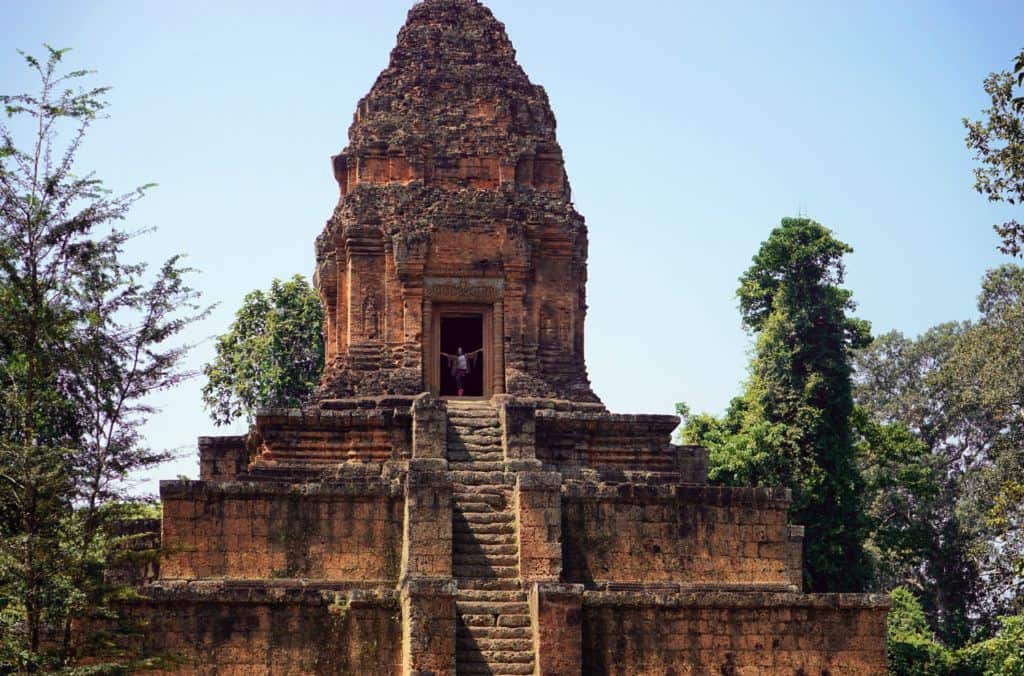
How Much Does it Cost to Travel in Cambodia?
With all that being said, how much can you expect to spend on a trip to Cambodia? How much should you budget if you plan to visit for a week, two weeks, or even a month?
I always end my budget breakdowns with the daily costs of my cumulative time spent in a country, as I know it’ll help you better plan out any upcoming travel expenses. In this case, because I visited Cambodia on both the backpacking and higher-end of the budget spectrum, I’m going to separate out my personal expenses into several sections.
I spent six weeks backpacking in Cambodia, during which I stayed in budget guesthouses (essentially the cheapest places that were still rated 9+/10 online, travelled by bus and minivan, ate street food, and visited Angkor Wat. On this trip, my costs averaged:
Accommodation: $8 a day
Transportation: $5 a day
Food: $9 a day
Activities and entrance fees: $2 a day
Total amount spent: $24 a day
Next, I spent two weeks travelling across Cambodia as part of a couple on a high-end and full-of-splurges trip. Over that time, I averaged:
Accommodation: $120 a day
Transportation: $7 a day
Food: $15 a day
Activities and entrance fees: $3 a day
Total amount spent: $145 a day
Most recently, I travelled around Cambodia on a mid-range budget, treating myself to well-rated accommodation with swimming pools, travelling overland by minivan, splurging occasionally on high-end meals and cocktail bars but generally eating on the streets, and hitting up Angkor Wat for the third time.
Accommodation: $40 a day
Transportation: $8 a day
Food: $18 a day
Activities and entrance fees: $3 a day
Total amount spent: $69 a day
As you can undoubtedly see, Cambodia is a high-value travel destination that can be visited on the most shoestring of budgets.
If you have the ability to splurge while you’re in the country, you’ll land yourself with some wonderful rooms and experiences, but the country is just as spectacular when you’re backpacking around.
But don’t you dare think about skipping Angkor Wat to save some money 🙂
Related Articles on Cambodia
🇰🇭 Koh Rong: A Beautiful Island That’s Riddled With Sandflies
🏝 Otres Beach: My Cambodian Beach Paradise
Other Destinations in Southeast Asia to Explore
🇹🇭 The Ultimate Guide to Thailand’s Trang Islands
🍜 23 Incredible Things to do in Chiang Mai, Thailand
🕶 Koh Yao Noi: My Thai Island Paradise
☀️ 23 Epic Things to Do in Phuket, Thailand
🏖 Koh Kood: The Prettiest Island in Thailand
🇻🇳 How Much Does it Cost to Travel in Vietnam?
🇱🇦 How Much Does it Cost to Travel in Laos?
Is the cost of travel in Cambodia more or less than you expected? Sound off in the comments below!
The post The Cost of Travel in Cambodia: A Detailed Budget Breakdown appeared first on Never Ending Footsteps.




